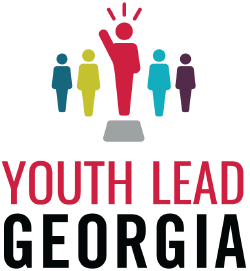Public art isn’t just about beautifying spaces. It also can have a design element that provides functionality – that’s how to sell public art.
“There’s no more art. It’s a design solution,” said Elan Buchen, Roswell Arts Fund Public Art Manager, knows it too well. Prior to taking his position in Roswell, he was the project coordinator for art and design with the Atlanta Beltline, which transformed the cityscape from an eyesore to a thriving part of the community incorporating art and adding to Atlantans’ quality of life.
Buchen was one of the guest speakers at the Greater Augusta Arts’ Council’s Arts Day Luncheon Nov. 18 at the Julian Smith Casino.
Buchen said a transformative idea in funding public art was changing “art” from a line item on the budget. By fusing the concepts of art and design to create a beautiful space that also had function, that line item on the budget got a new name.
“It becomes a line item for the design of an active filtration system,” he said, showing slides of the old Fourth Ward Park, which has artistic element that serve practical purposes of storm water management, as well.
Buchen highlighted the Beltline project, part of a former railroad corridor in Atlanta which has trails and public art. Some of the former railroad ties were incorporated into pieces.
Augusta has multiple public art pieces. As part of the luncheon, arts council officials highlighted some of them such as the Sculpture Trail which opened earlier this year, the Art the Box project with the painted traffic boxes and the many murals in the downtown space.
Denise Brinson, assistant city manager for the city of Suwanee, Ga., highlighted the impact of art on the tax base in her city, comparing the tax revenues with a Walmart, Publix and a city center with a performance venue, restaurants, homes and commercial uses.
The 23-acre city center brought in more tax revenue than the commercial developments of similar size. Her 2017 figures showed the Publix center collecting $7,200 per acre, per year; the Walmart center at $10,400 per acre, per year, and the city center at $19,300 per acre per year.
“It’s a lot more than just a place to shop,” she said.
Odie Donald II, Augusta’s city administrator, spoke of celebrating his first anniversary in the Garden City and what he’s seen in the area since arriving.
“As I look at what other people are doing, I’m probably more excited about what’s happening here in Augusta. The arts council has made great strides,” he said.
He sees great things on the horizon for the city and the arts world, he said.
The arts luncheon is an annual event that brings together members of the arts community as well as leaders from other sectors. The current class of Leadership Augusta also attended the luncheon.
Charmain Z. Brackett is the Features Editor for The Augusta Press. Reach her at charmain@theaugustapress.com.










